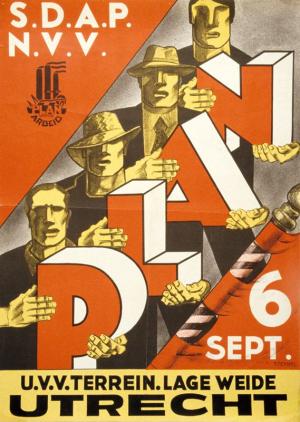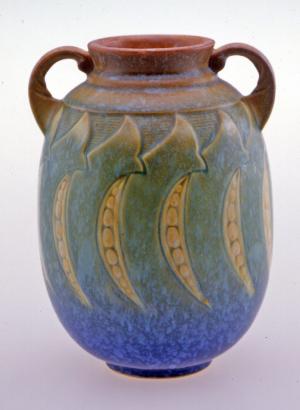
The Wolfsonian: bigger, stronger, better
The Wolfsonian-FIU has really been on a roll lately. First it received a $5 million Knight Foundation grant in December, in particular to beef up its online presence so more people can get to know its unique collection. And then last month, Wolfsonian founder Mitchell “Micky” Wolfson decided the time was ripe to significantly grow the museum in a spectacular way. He has donated three floors of a downtown Miami building on Flagler Street — expanding the Wolfsonian’s literal reach from Miami Beach on to the mainland — along with a gift of about 25,000 objects and artifacts from his collection. An already strong museum is getting stronger.
Wolfson’s collection is reflected in what the Wolfsonian specializes currently, so these additional items only bolster the one-of-a-kind offerings, rather than creating a departure (and as is sometimes the case with major gifts to museum, creating a distraction).
American vase, 1933, in the Wolfsonian Collection.
The collections are fairly tightly focused on design objects, books, archives, accessories and posters that reflect the transformative era in Western history between 1885 and 1945. These were the decades, the people and movements that experienced the Industrial Revolution, social upheavals and realignments, and two world wars. In particular, the Wolfsonian’s current collection is made up of many objects and artifacts from United States, Great Britain, Germany, Italy and the Netherlands — including furniture, decorative artworks and printed materials that reveal the aesthetics, the politics, the technological advances of the times and places.
The museum already has about 120,000 pieces that help tell this history — 25,000 more will truly make it unlike any other institution in the country. With two large outlets (the main museum will remain headquartered on Washington Avenue), Miami’s artistic horizon expands from a concentrated emphasis on contemporary art to a broader repository of cultural life. As a research center connected to FIU, it also will increasingly draw not just visual arts visitors, but researchers and students who will have access to these major resources. In this case, bigger (with its tight focus) is definitely better.
Recent Content
-
Artsarticle ·
-
Artsarticle ·
-
Artsarticle ·

